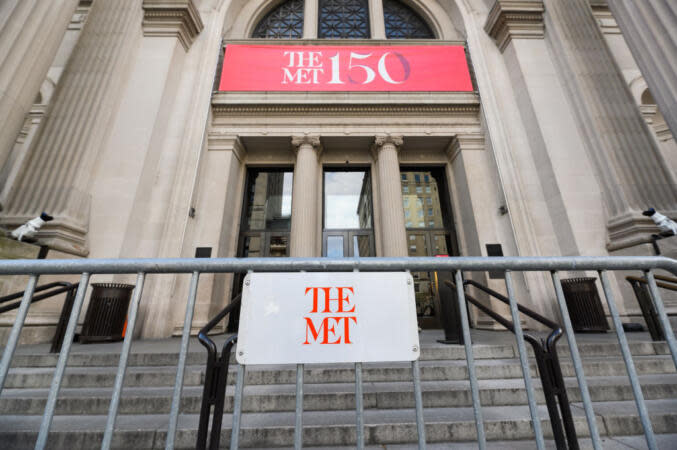Painting That Depicted Enslaved Teen From New Orleans Restored After He Was Removed; Portrait Will Show At The MET

An 1837 portrait depicting but later concealing an enslaved teen boy with a white family from New Orleans has finally been restored.
According to the New York Post, the public will be able to see this piece of art titled “Bélizaire and the Frey Children” at the Metropolitan Museum of Art. The painting was completed in 1837 by Jacques Guillaume Lucien Amans, a French neoclassical painter, for a banker named Frederick Frey to highlight his children. The Frey family purchased Bélizaire, the Black 15-year-old etched on the canvas, at the age of six.
“The Frey portrait shows a surprising intimacy between the four children, suggesting that Bélizaire was a valued member of the household, despite his enslaved status,” ArtNet stated on its website. “But at some point around the turn of the century, someone painted over Bélizaire, not only erasing him from the Frey family history, but obscuring a rare example from the era of a realistic portrait of an enslaved person.”
It’s said that the portrait remained in the family for more than a century until Coralie D’Aunoy Frey, a descendant from the matriarch’s side, donated the art to the New Orleans Museum of Art and shared that Bélizaire had been removed from the initial artwork, so it was never a secret. Instead of the museum restoring it themselves, they chose to “do nothing with the information” and hung it up as is. Since the kids in the painting were unknown to the public and the painting not being “in exhibitable condition,” the museum’s director John Bullard decided to remove it from the museum and sold it in an auction at Christie’s New York for $7,200 in 2005. Years later, Bullard admitted to the New York Times that “it was a mistake.”
The painting made its rounds from Louisiana to New York to Virginia before making its way back to “The Boot” and in the hands of Jeremy K. Simien, an art collector of Creole descendants who lives in Baton Rouge for a confidential price in 2021. He is the person who fully restored the painting, which revealed Bélizaire leaning on a tree in a white collard shirt and long tan jacket behind the Frey clan.
On August 14, the MET published a press release on their website to announce the portrait was now in their care and believe it showcases the complex truth of America during the Victorian Era.
“The acquisition of this rare painting is transformative for the American Wing, representing our first naturalistic portrait of a named Black subject set in a Southern landscape—a work that allows us to address many collection absences and asymmetries as we approach the 100th anniversary of the Wing’s founding in 2024,” Sylvia Yount, Lawrence A. Fleischman Curator in Charge of the American Wing at The Met said.
Max Hollein, the MET’s Marina Kellen French Director and CEO, also explained why it was important to acquire.
“The deeply compelling and rare painting carries immense historical and artistic significance and represents an important milestone in our ongoing commitment to sharing profound stories of identities and place, as well as memory and erasure,” he said in a statement, according to the press release.
After some ancestry research was conducted, it was learned that Bélizaire lived longer than the Frey children. The sisters, Elizabeth and Léontine, died the same year the painting was completed due to yellow fever while their brother, Fredrick, passed several years later. The enslaved teen lived through the Civil War and was documented on inventories in New Orleans not long ahead of Union forces seizing the city the following year. After that, there’s no record of what happened to him.

